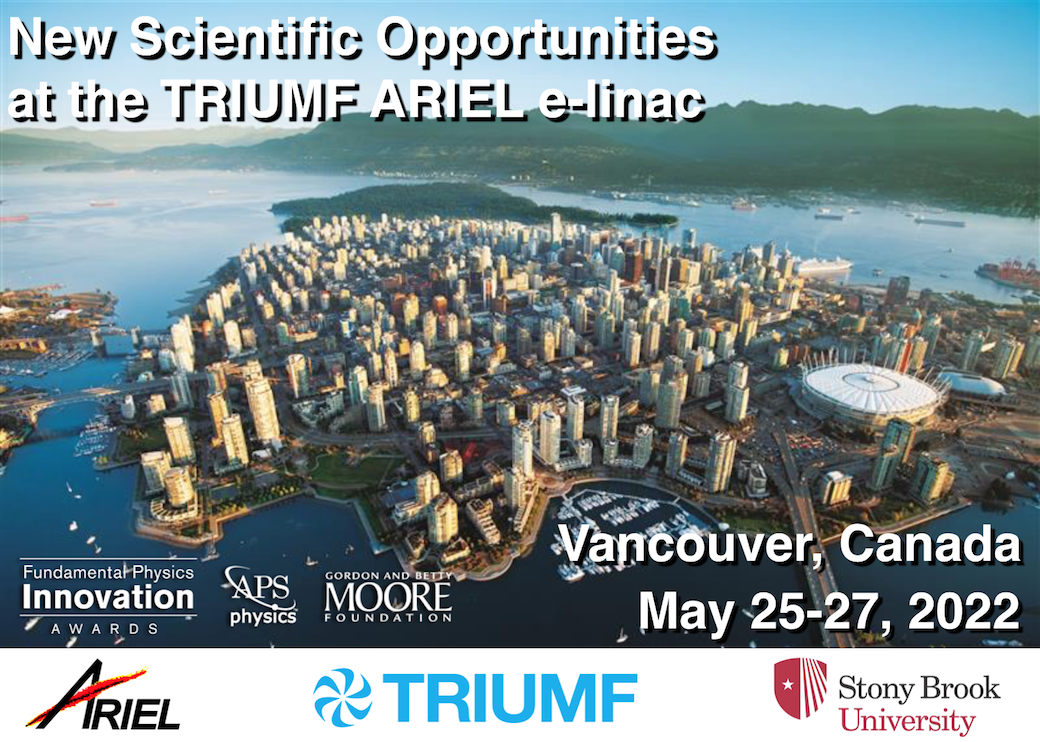This is a hybrid event. You may reach it via the following zoom meeting: https://stonybrook.zoom.us/j/97600797267?pwd=MHRXVzltTCtIaWtwKzNKR0lCM2hJUT09
Despite the enduring success of the Standard Model over decades of experiments, it is glaringly incomplete, failing to describe dark matter or energy, or the overall matter-antimatter asymmetry we observe in the universe. Many other features, such as neutrino masses, are put in ‘by hand’, without a settled explanation of how they are generated.
While the LHC and its large detector collaborations continue to seek BSM physics at the energy frontier, and increasingly large subterranean detectors probe neutrino and dark matter signals with greater and greater sensitivities, the increasing scale of these experiments represents a substantial undertaking, in terms of cost and timeline. Although these have yielded important results, confirming the existence of the Higgs and furthering our understanding of neutrino dynamics, they have not yet provided a clear view of what lies beyond the Standard Model. The prevailing expectations of the previous decades (minimal supersymmetry, WIMP-based dark matter) have not yet been observed.
A complementary experimental thrust in the quest for new physics is to probe lower energy scales at the intensity and precision frontiers. Such experiments can be mounted more nimbly, and in parallel, to focus on different reported anomalies as lampposts, to improve precision in places where new physics may lurk, and to test new classes of BSM physics that may arise at those energies. With no definitive guidance on the form an underlying theory must take, this is an increasingly appealing approach to the search.
Modern accelerator designs can provide higher and higher beam currents, achieving high luminosities without the need for thick targets, unlocking new experimental avenues. Energy Recovery Linacs (ERLs) at the sub-GeV scale are a particularly exciting emerging platform, with a series of machines under construction or in the planning stages.
The superconducting e-Linac at TRIUMF/ARIEL is one such machine. The ARIEL e-Linac is a 30 MeV superconducting electron linac capable of a continuous wave (cw) beam of up to 10 mA (currently limited to an intensity of 3.3 mA) due to the existing 10kW beam dump). The linac uses 1.3 GHz technology with three nine-cell cavities fed from two high power (300 kW) klystrons. Its cavities are cryogenically cooled to 2 K and are housed in two cryomodules (CM); an injector CM with one cavity and an accelerating CM with two cavities. Each cavity adds 10 MeV to the beam energy. In the future re-circulation of the electron beam could be implemented to increase the electron beam energy up to 50 MeV.
A magnetic spectrometer system will be installed in the ARIEL beam hall in the next year, with an initial program to search for corroborating evidence of the new physics proposed to explain current anomalies in 8Be and 4He decay.
To make the fullest use of the ARIEL e-Linac, and similar-scale accelerators, we will hold a workshop at the TRIUMF laboratory in Vancouver, Canada on May 24-27, 2022 to showcase the capabilities of ARIEL and develop a wider program for this apparatus, and other experiments of similar scale, that can address current anomalies and outstanding questions in particle and nuclear physics.
The meeting will gather together theorists and experimentalists with shared interests in MeV-scale physics at the intensity frontier, in order to stimulate ideas and collaboration for novel applications of new, high-intensity, modest-energy accelerators like the ARIEL e-Linac.
The Organizing Committee (OC), consists of faculty at Stony Brook, MIT, U. British Columbia, St.Mary’s U., TRIUMF, and U. Winnipeg, including:
Jan Bernauer (SBU), Ross Corliss (SBU), Michael Hasinoff (UBC), Rituparna Kanungo (SMU), Jeffery Martin (Winnipeg), Richard Milner (MIT), Katherine Pachal (TRIUMF) and Stanley Yen (TRIUMF).

